Full text
PDF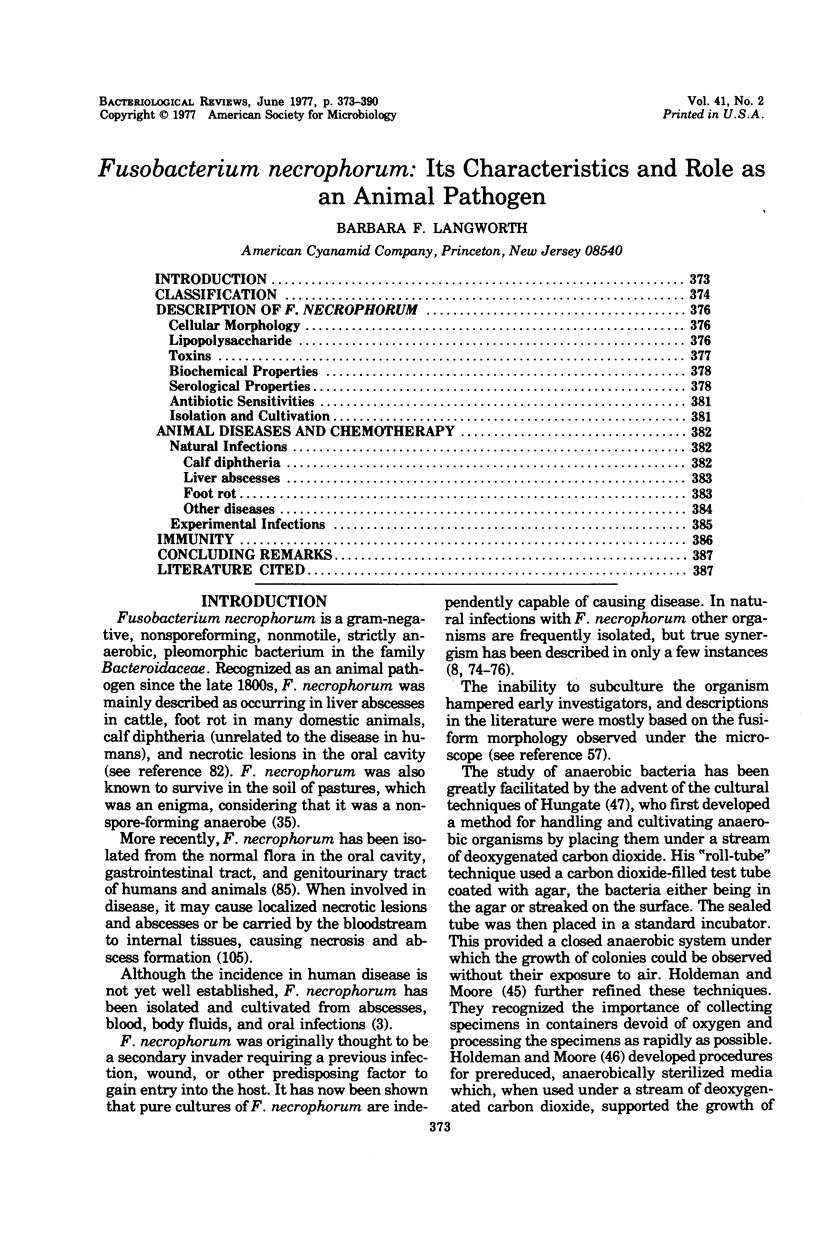
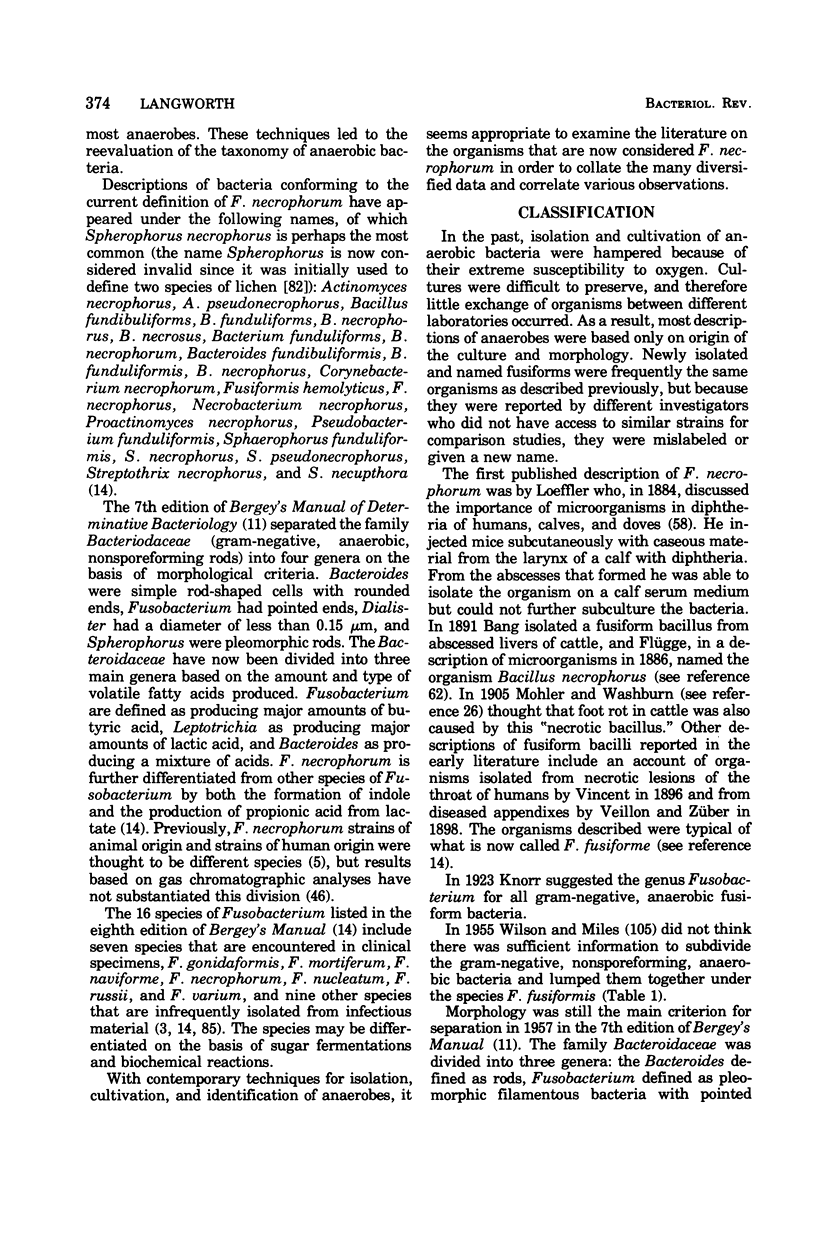
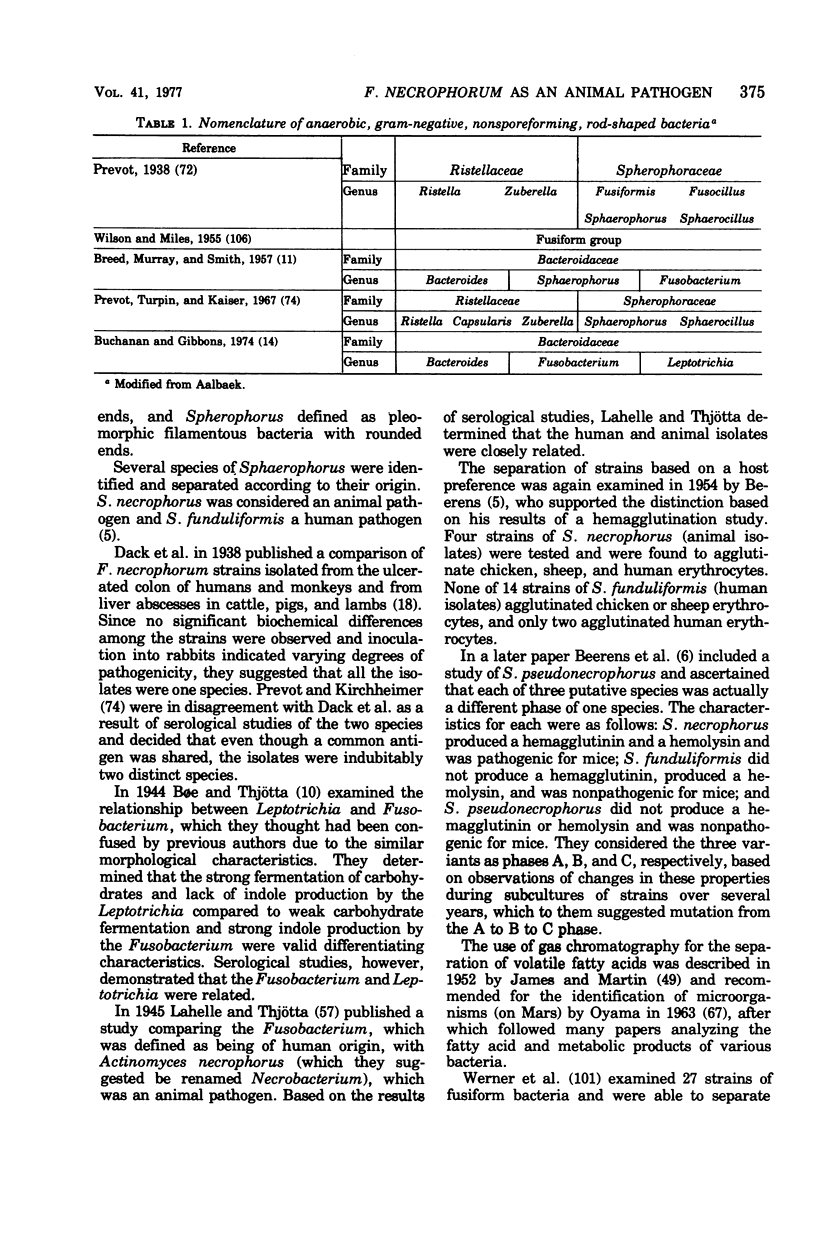
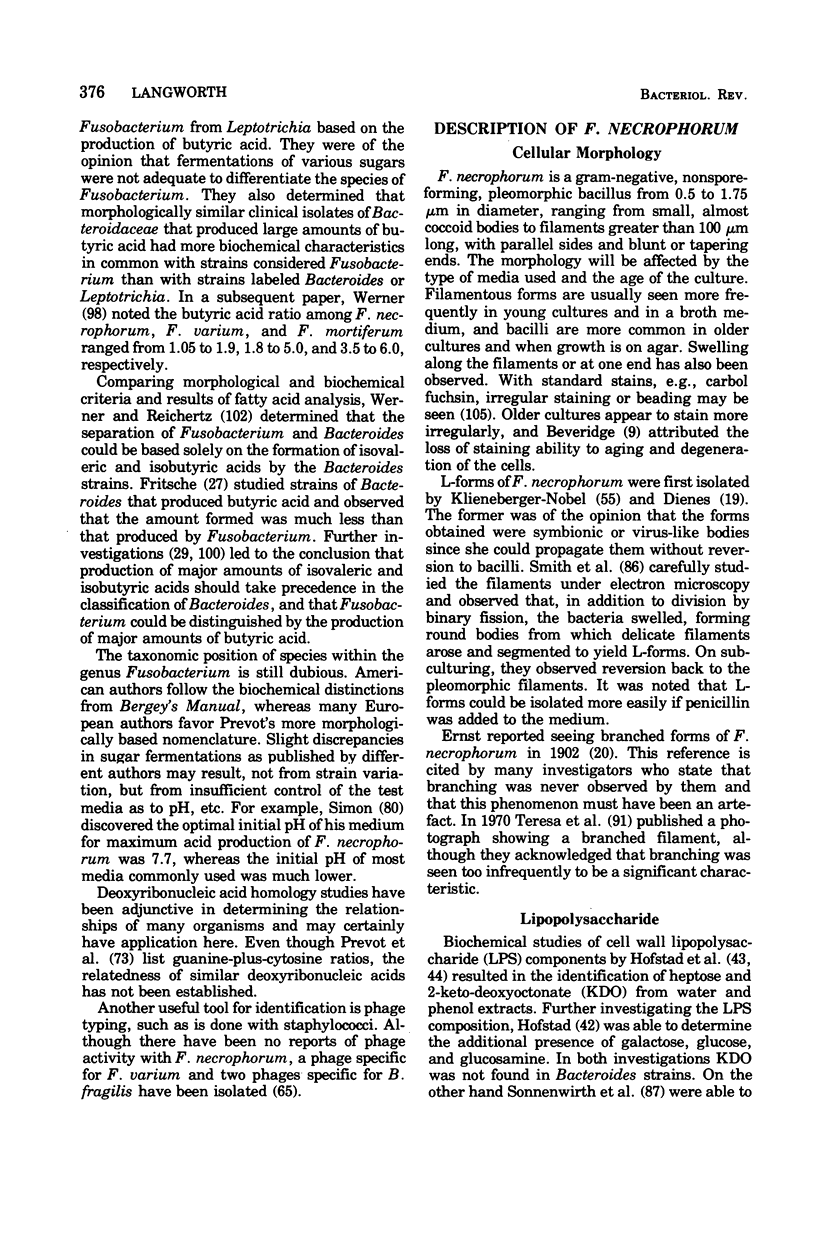
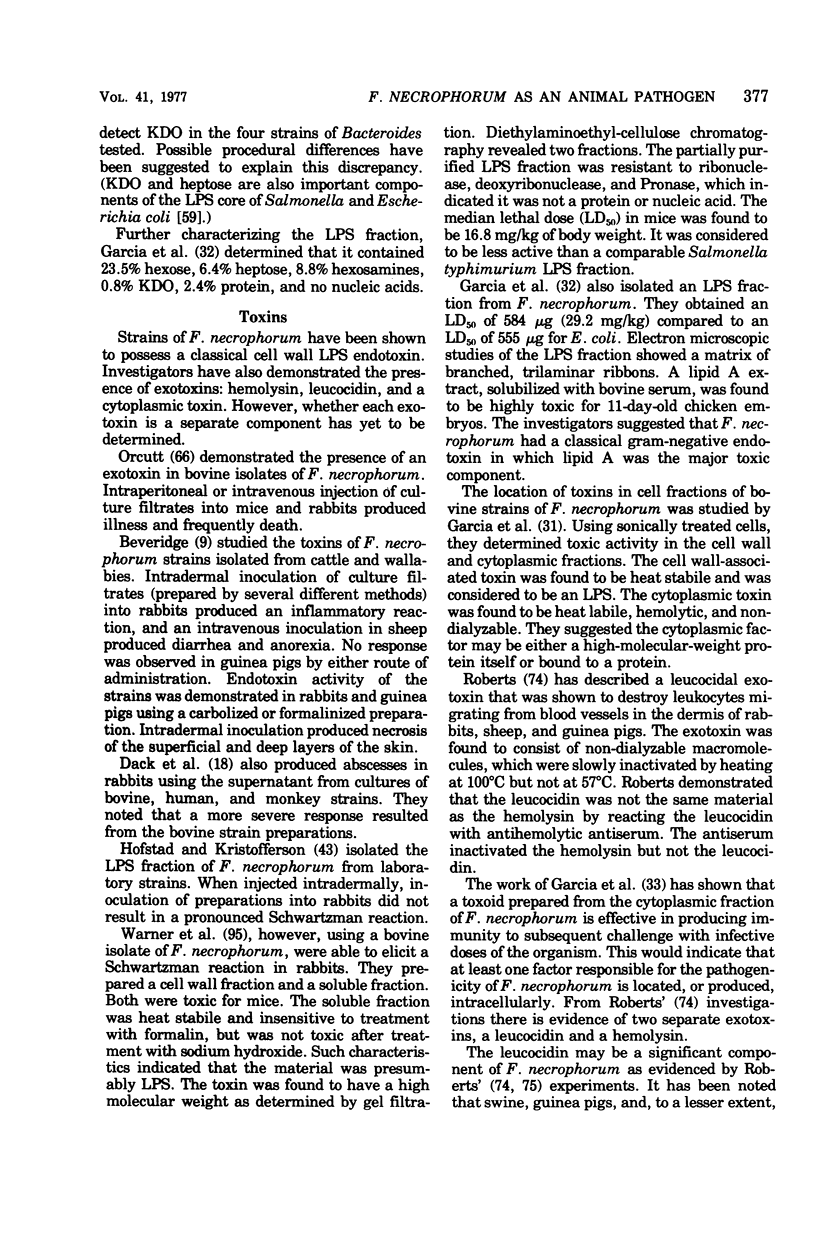
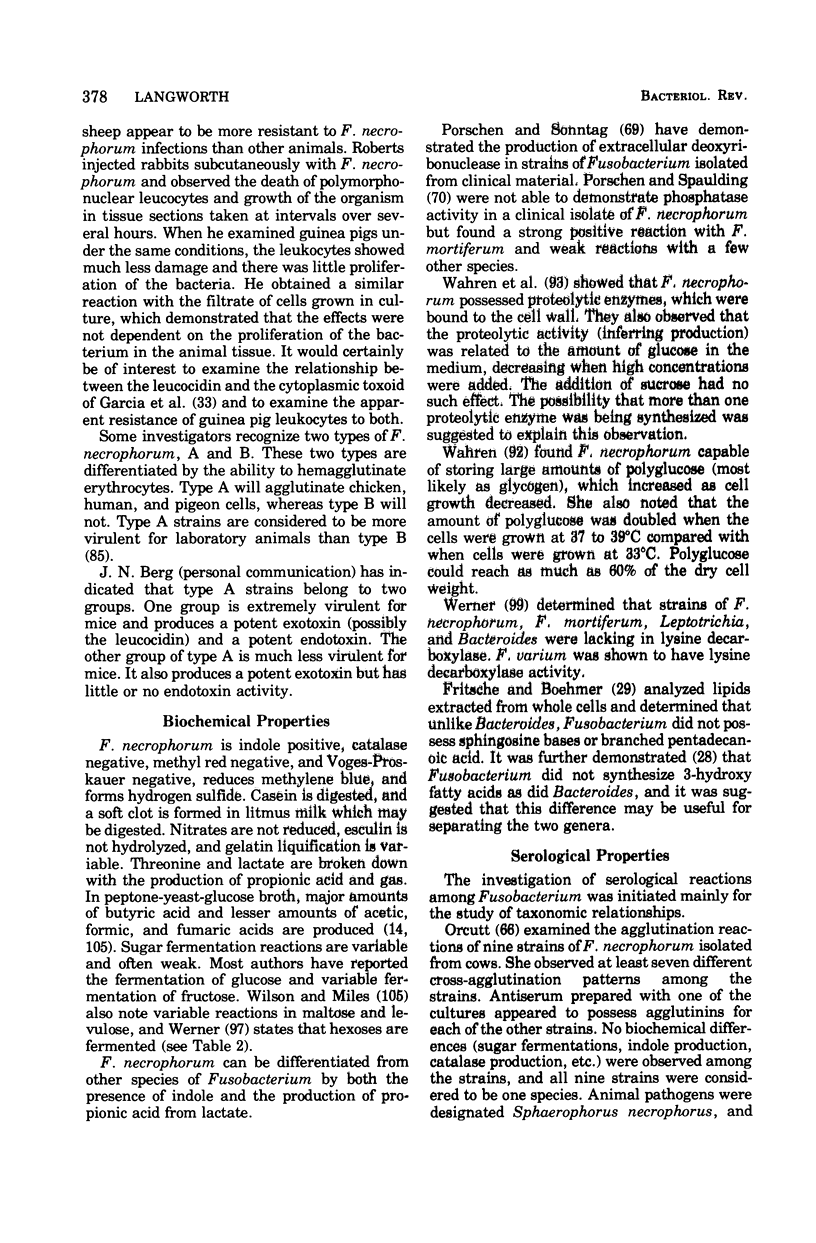
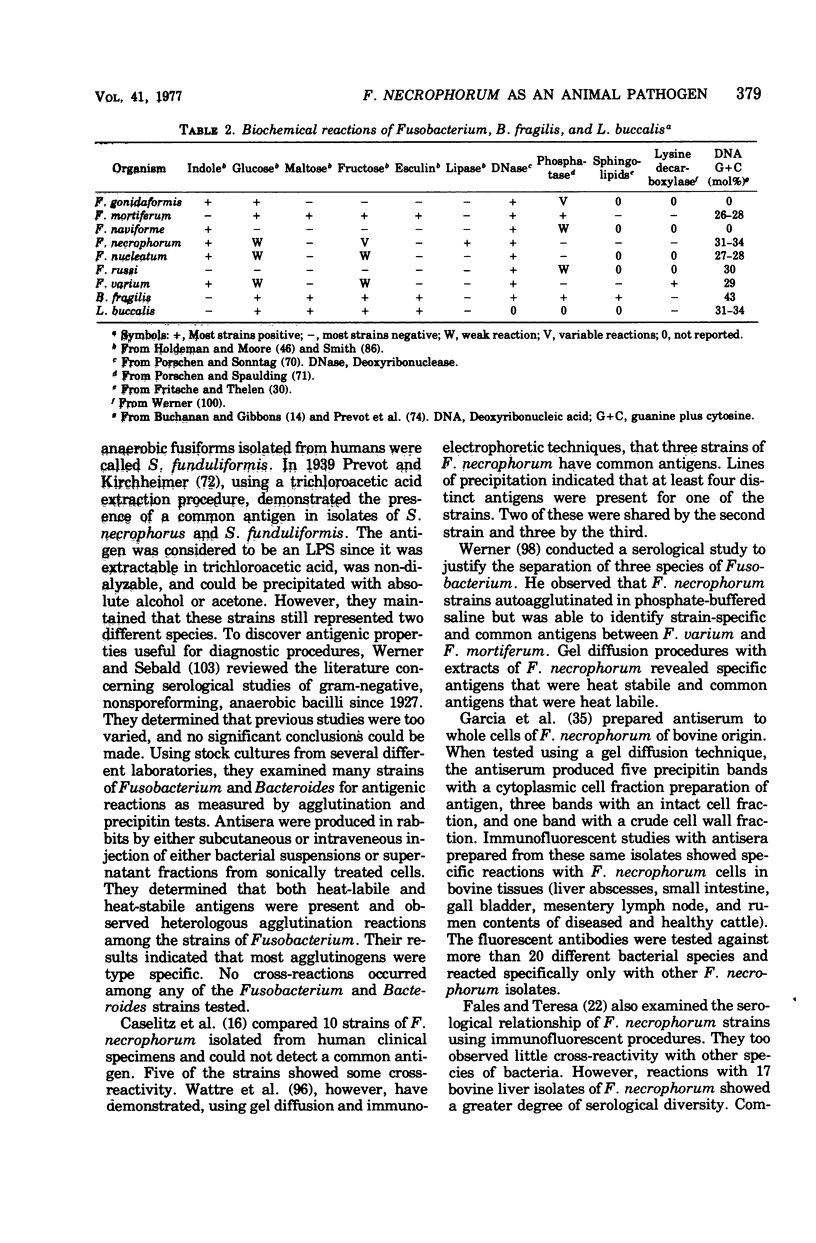
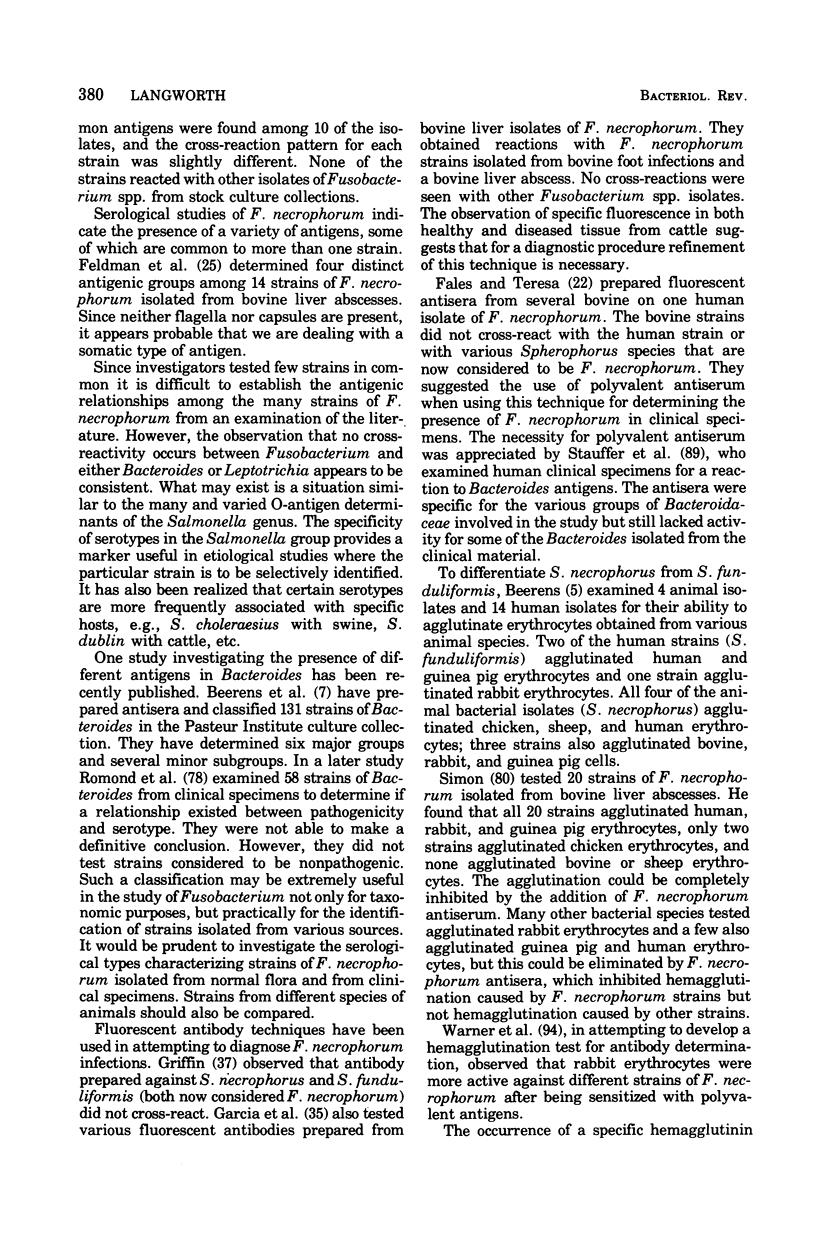
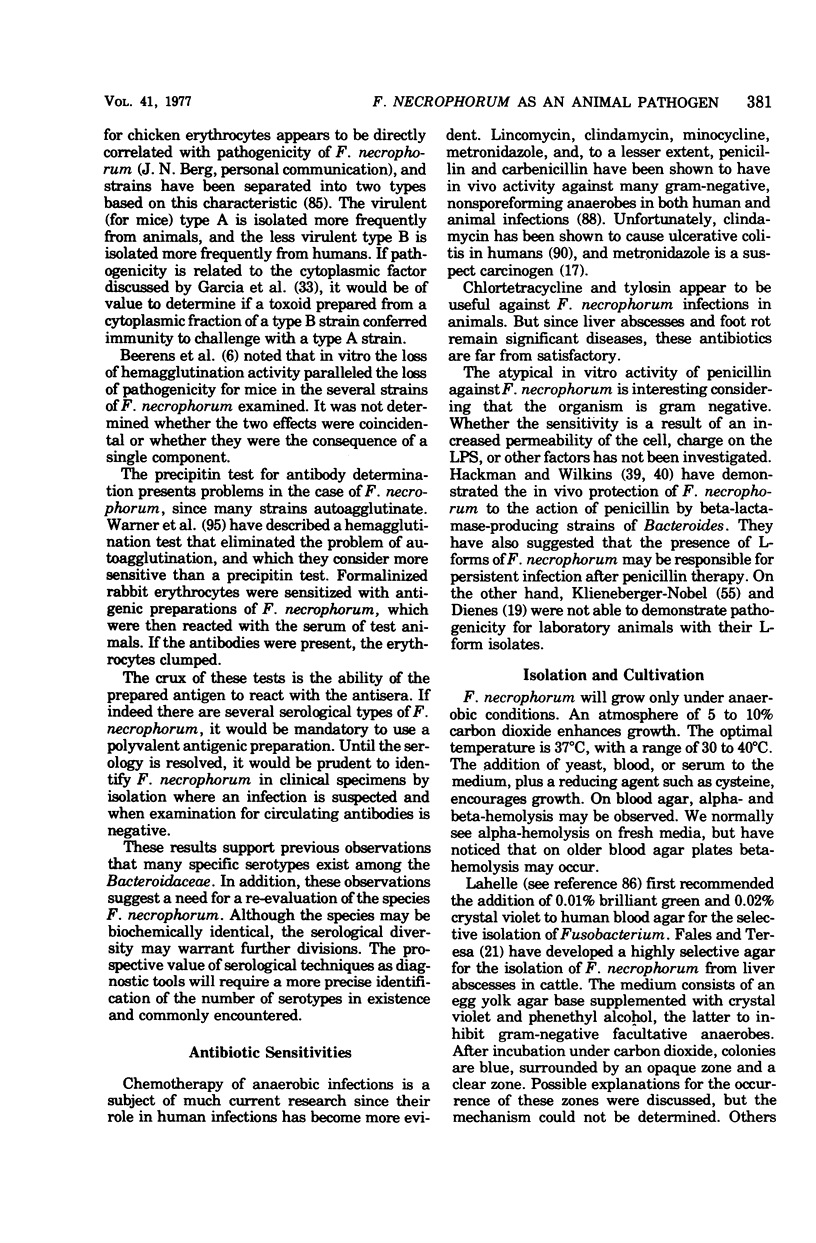
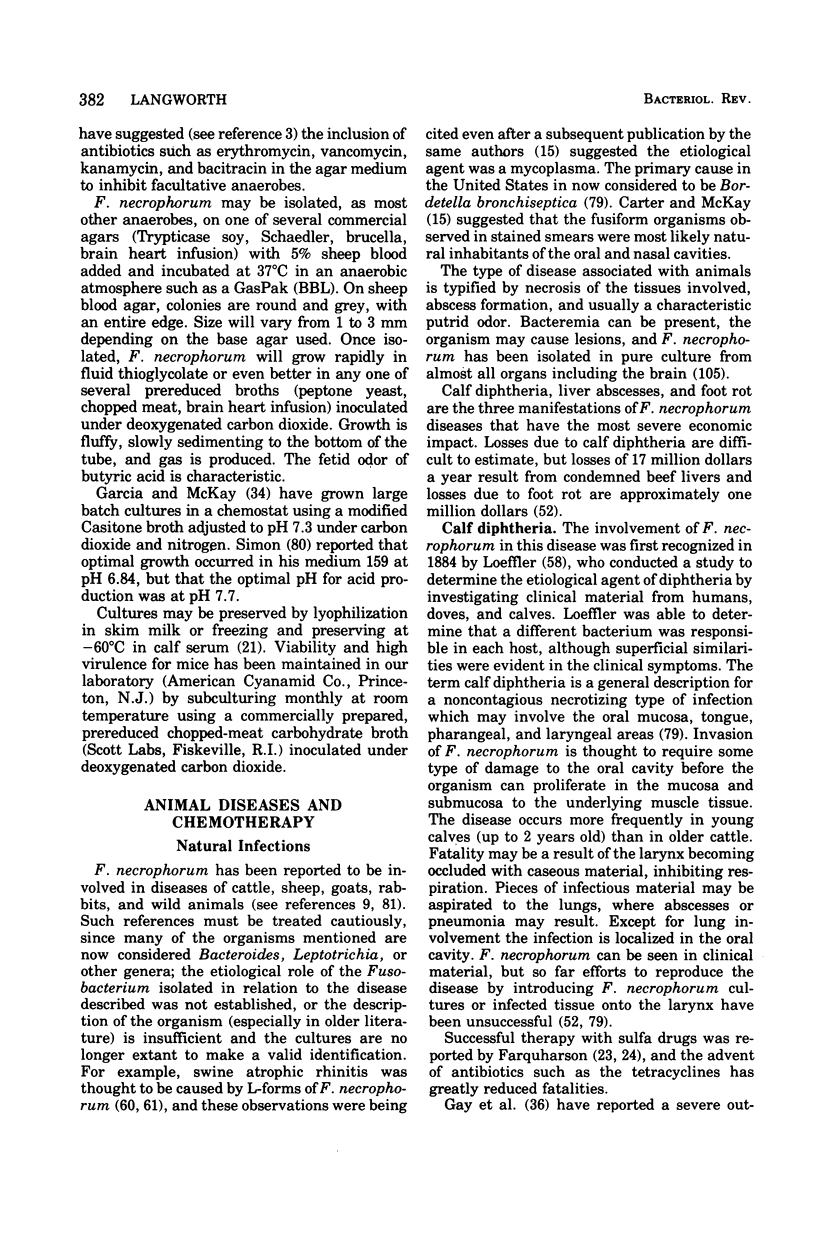
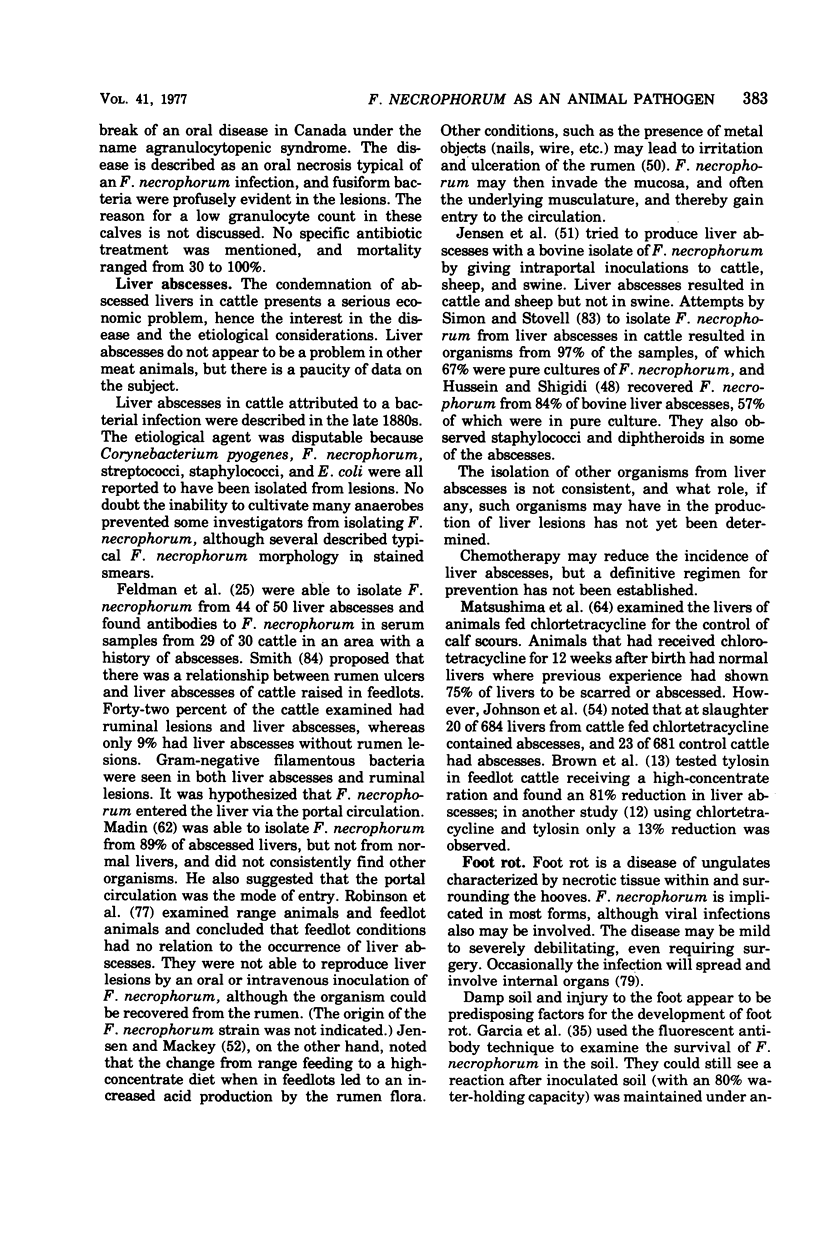

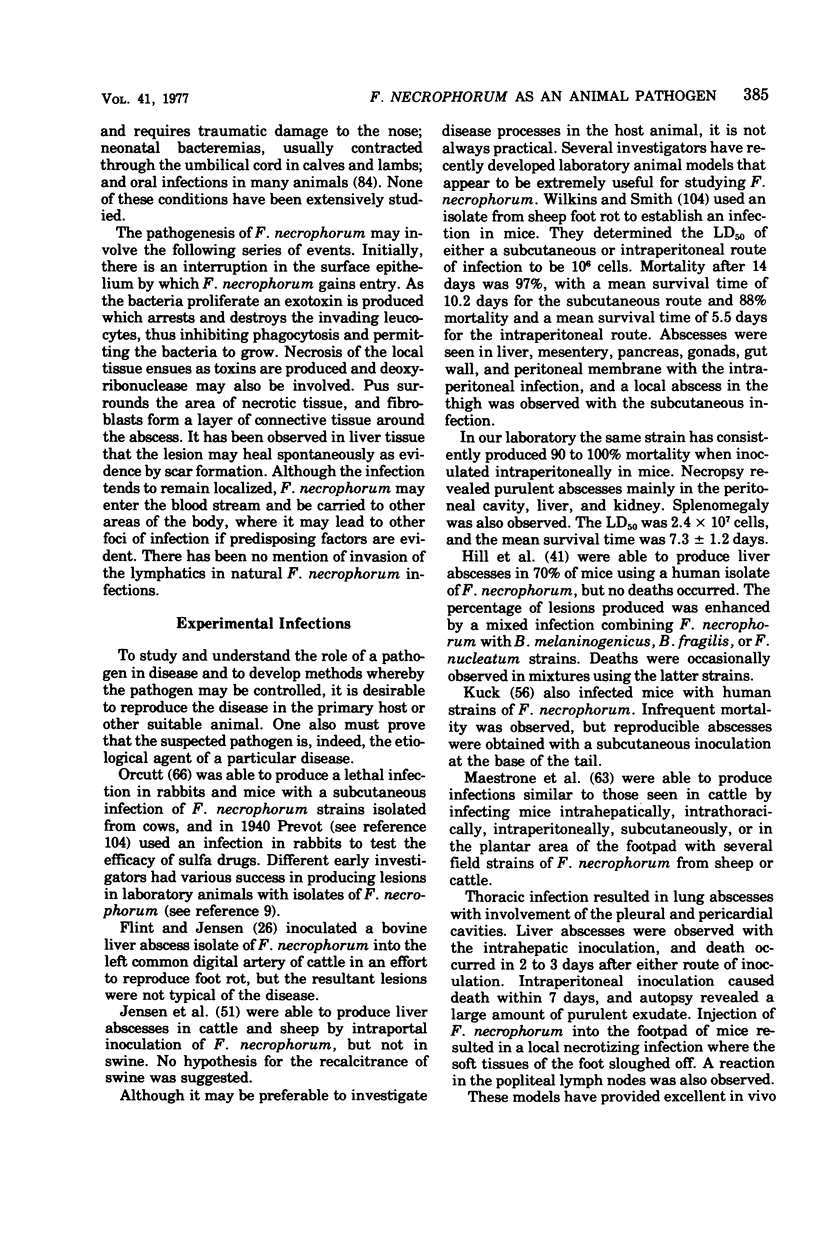
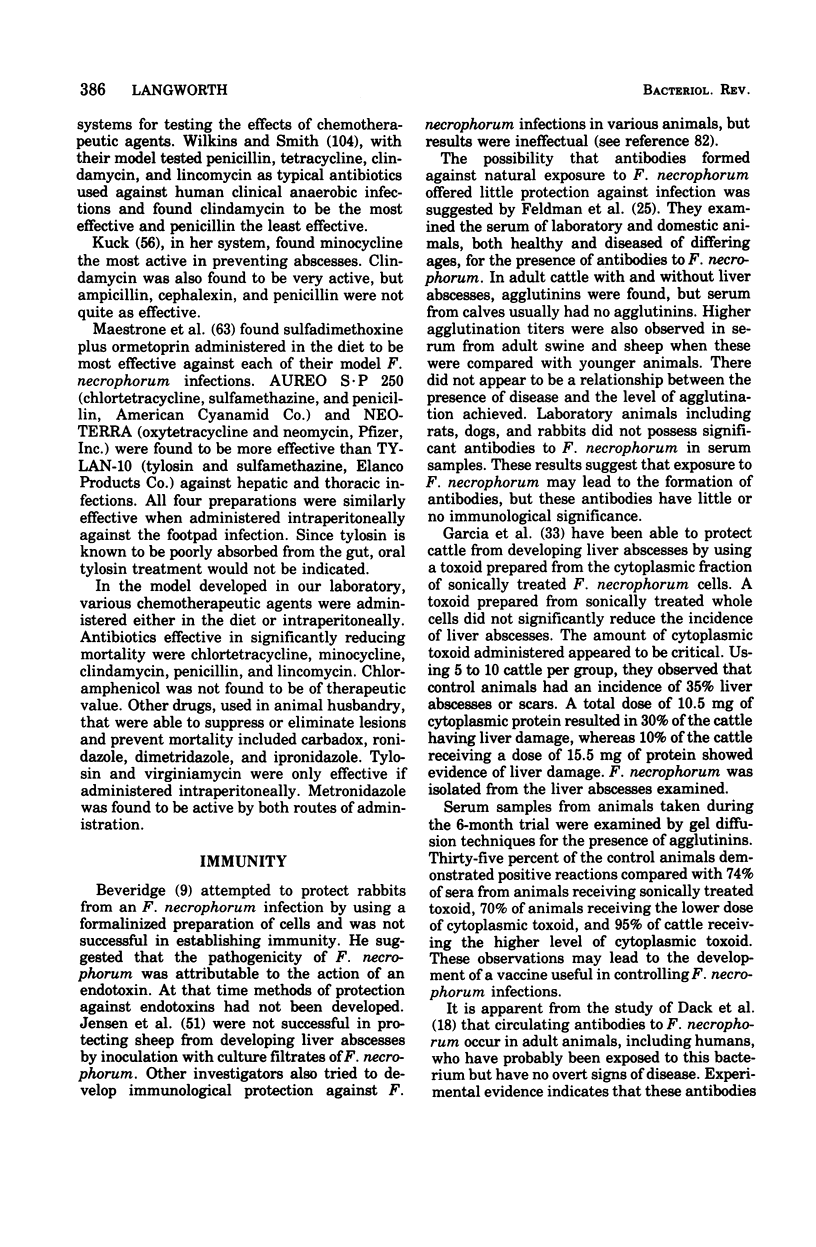
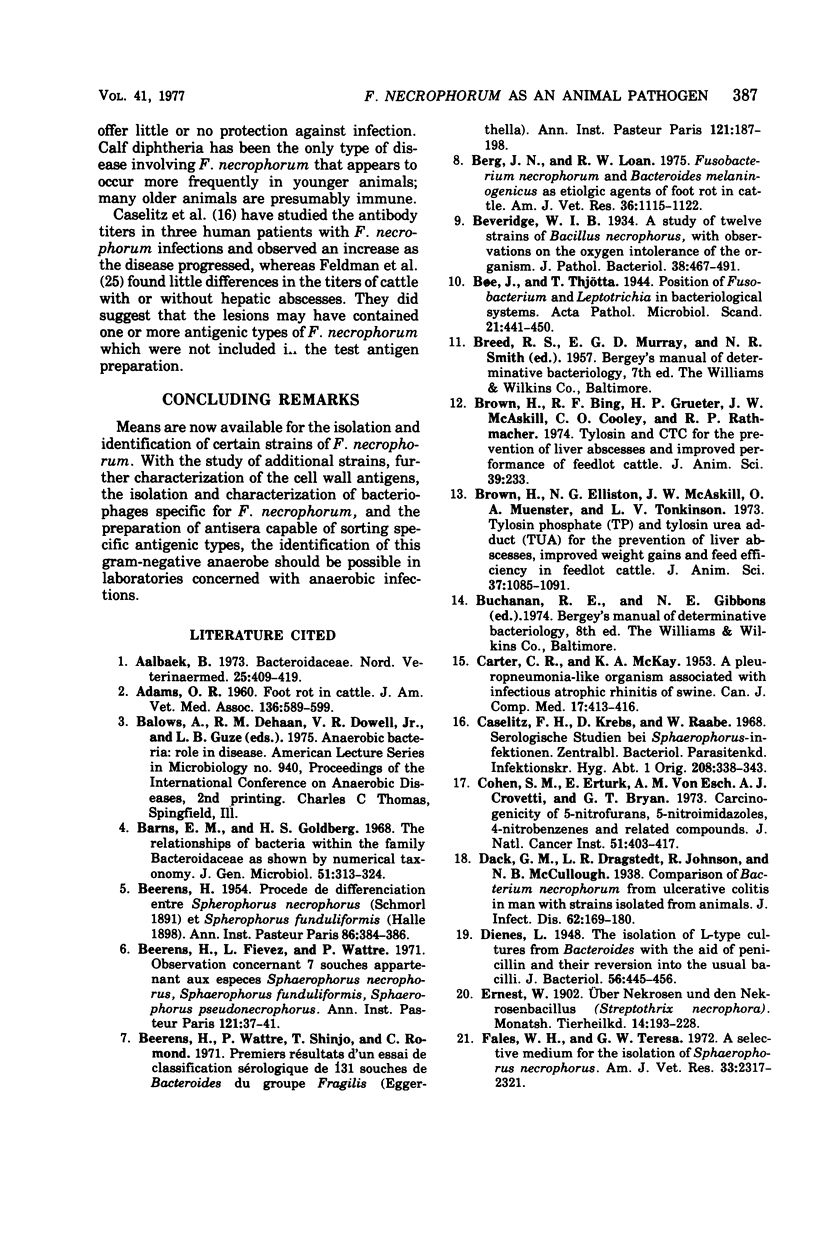
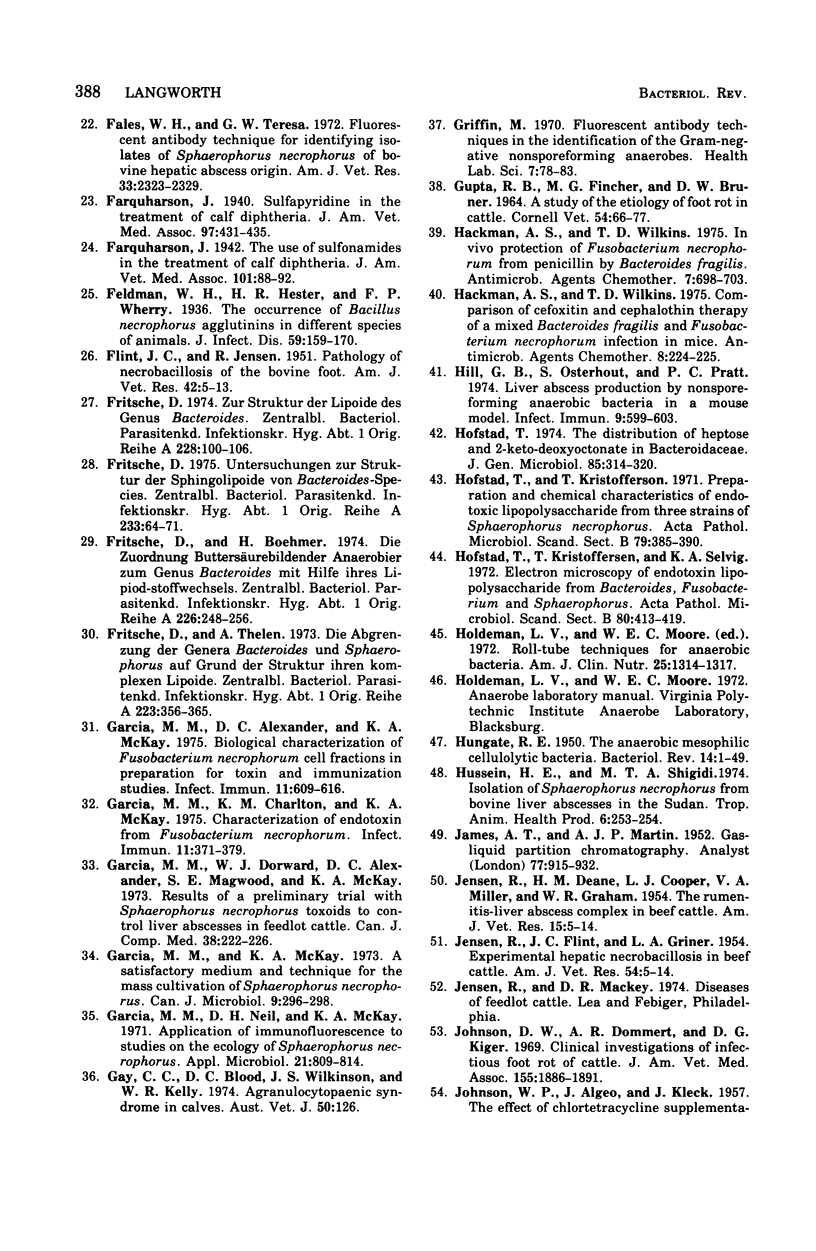
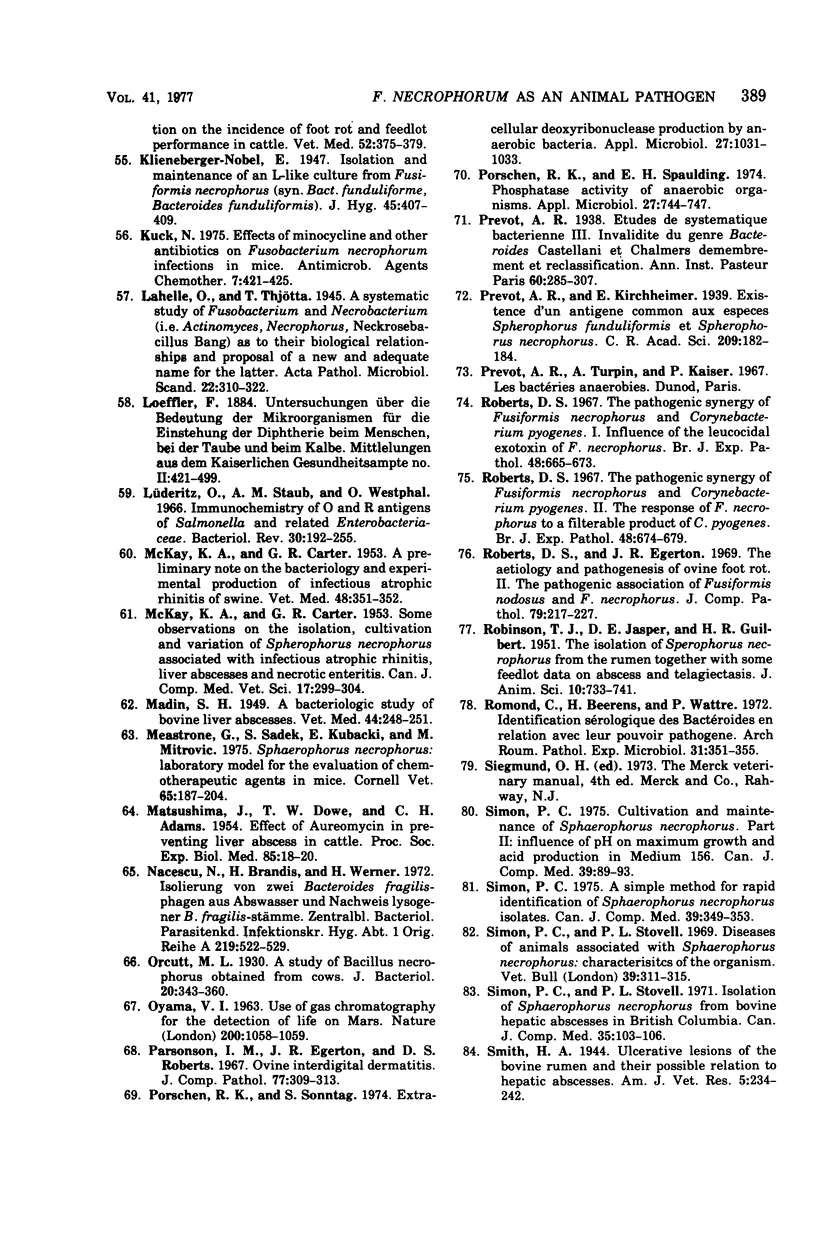
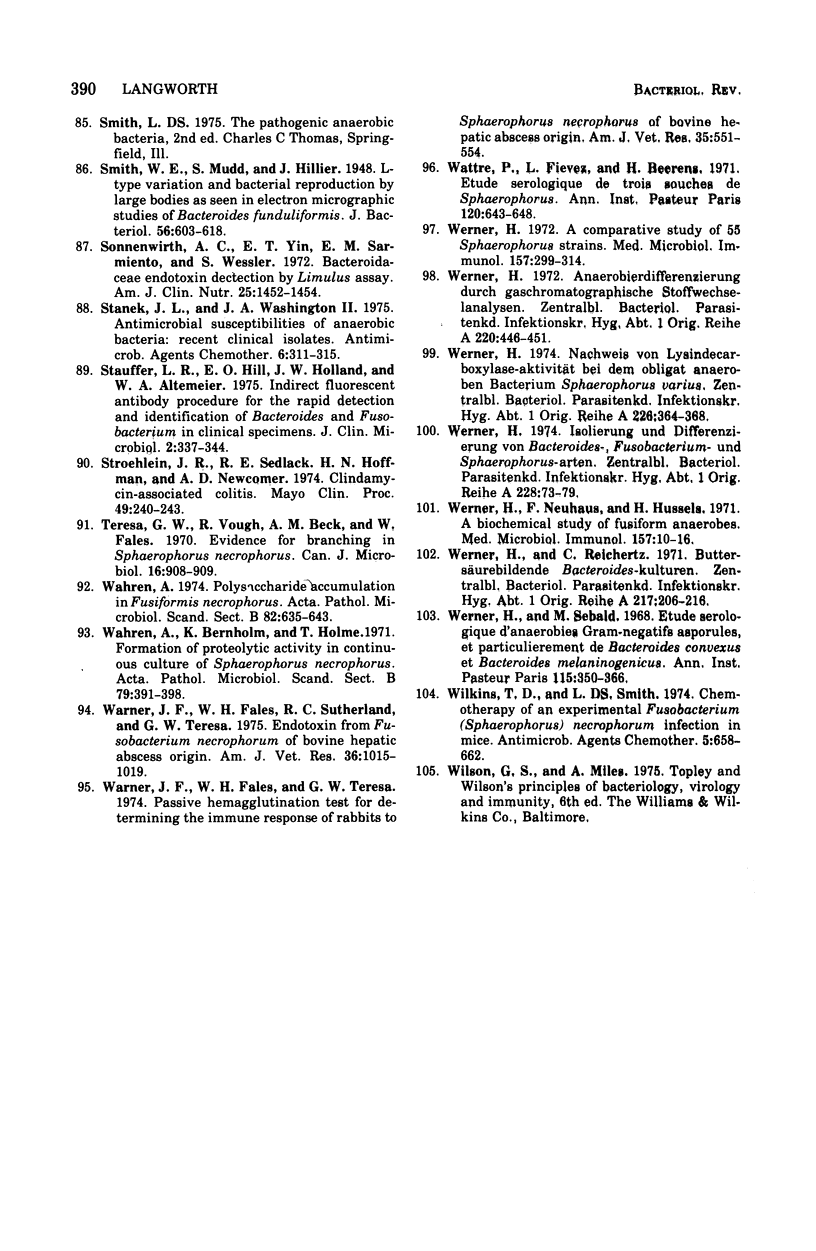
Selected References
These references are in PubMed. This may not be the complete list of references from this article.
- ADAMS O. R. Footrot in cattle. J Am Vet Med Assoc. 1960 Jun 15;136:589–599. [PubMed] [Google Scholar]
- Aalbaek B. Bacteroidaceae. Status of classification and identification of anaerobic, non-sporing, gram-negative rods. Nord Vet Med. 1973 Sep;25(9):409–419. [PubMed] [Google Scholar]
- BEERENS H. Procédé de différenciation entre Spherophorus necrophorus (Schmorl 1891) et Spherophorus funduliformis (Halle 1898). Ann Inst Pasteur (Paris) 1954 Mar;86(3):384–386. [PubMed] [Google Scholar]
- Barnes E. M., Goldberg H. S. The relationships of bacteria within the family Bacteroidaceae as shown by numerical taxonomy. J Gen Microbiol. 1968 May;51(3):313–324. doi: 10.1099/00221287-51-3-313. [DOI] [PubMed] [Google Scholar]
- Beerens H., Fievez L., Wattre P. Observations concernant 7 souches appartenant aux espèces Sphaerophorus necrophorus, Sphaerophorus funduliformis Sphaerophorus pseudonecrophorus. Ann Inst Pasteur (Paris) 1971 Jul;121(1):37–41. [PubMed] [Google Scholar]
- Beerens H., Wattre P., Shinjo T., Romond C. Premiers résultats d'un essai de classification sérologique de 131 souches de Bacteroïdes du groupe fragilis (eggerthella. Ann Inst Pasteur (Paris) 1971 Aug;121(2):187–198. [PubMed] [Google Scholar]
- Berg J. N., Loan R. W. Fusobacterium necrophorum and Bacteroides melaninogenicus as etiologic agents of foot rot in cattle. Am J Vet Res. 1975 Aug;36(08):1115–1122. [PubMed] [Google Scholar]
- Brown H., Elliston N. G., McAskill J. W., Muenster O. A., Tonkinson L. V. Tylosin phosphate (TP) and tylosin urea adduct (TUA) for the prevention of liver abscesses, improved weight gains and feed efficiency in feedlot cattle. J Anim Sci. 1973 Nov;37(5):1085–1091. doi: 10.2527/jas1973.3751085x. [DOI] [PubMed] [Google Scholar]
- Carter C. R., McKay K. A. A Pleuropneumonia-like Organism Associated with Infectious Atrophic Rhinitis of Swine. Can J Comp Med Vet Sci. 1953 Oct;17(10):413–416. [PMC free article] [PubMed] [Google Scholar]
- Caselitz F. H., Krebs D., Raabe W. Serologisch Studien bei Sphaerophorus-Infektionen. Zentralbl Bakteriol Orig. 1968;208(1):338–343. [PubMed] [Google Scholar]
- Cohen S. M., Ertürk E., Von Esch A. M., Crovetti A. J., Bryan G. T. Carcinogenicity of 5-nitrofurans, 5-nitroimidazoles, 4-nitrobenzenes, and related compounds. J Natl Cancer Inst. 1973 Aug;51(2):403–417. [PubMed] [Google Scholar]
- Dienes L. The Isolation of L Type Cultures from Bacteroides with the Aid of Penicillin and Their Reversion into the Usual Bacilli. J Bacteriol. 1948 Oct;56(4):445–456. doi: 10.1128/jb.56.4.445-456.1948. [DOI] [PMC free article] [PubMed] [Google Scholar]
- FLINT J. C., JENSEN R. Pathology of necrobacillosis of the bovine foot. Am J Vet Res. 1951 Jan;12(42):5–13. [PubMed] [Google Scholar]
- Fales W. H., Teresa G. W. A selective medium for the isolation of Sphaerophorus necrophorus. Am J Vet Res. 1972 Nov;33(11):2317–2321. [PubMed] [Google Scholar]
- Fales W. H., Teresa G. W. Fluorescent antibody technique for identifying isolates of Sphaerophorus necrophorus of bovine hepatic abscess origin. Am J Vet Res. 1972 Nov;33(11):2323–2329. [PubMed] [Google Scholar]
- Fritsche C. D. Zur Struktur der Lipoide des Genus Bacteroides. Zentralbl Bakteriol Orig A. 1974;228(1):100–106. [PubMed] [Google Scholar]
- Fritsche D., Boehmer H. Die Zuordnung Buttersäure-bildender Anaerobier zum Genus Bacteroides mit Hilfe ihres Lipoid-Stoffwechsels. Zentralbl Bakteriol Orig A. 1974 Feb;226(2):248–256. [PubMed] [Google Scholar]
- Fritsche D., Thelen A. Die Abgrenzung der Genera Bacteroides und Sphaerophorus auf Grund der Struktur ihrer komplexen Lipoide. Zentralbl Bakteriol Orig A. 1973 Mar;223(2):356–365. [PubMed] [Google Scholar]
- Fritsche D. Untersuchungen zur Struktur der Sphingolipoide von Bacteroides-Species. Zentralbl Bakteriol Orig A. 1975 Sep;233(1):64–71. [PubMed] [Google Scholar]
- GUPTA R. B., FINCHER M. G., BRUNER D. W. A STUDY OF THE ETIOLOGY OF FOOT-ROT IN CATTLE. Cornell Vet. 1964 Jan;54:66–77. [PubMed] [Google Scholar]
- Garcia M. M., Alexander D. C., McKay K. A. Biological characterization of Fusobacterium necrophorum. Cell fractions in preparation for toxin and immunization studies. Infect Immun. 1975 Apr;11(4):609–616. doi: 10.1128/iai.11.4.609-616.1975. [DOI] [PMC free article] [PubMed] [Google Scholar]
- Garcia M. M., Charlton K. M., McKay K. A. Characterization of endotoxin from Fusobacterium necrophorun. Infect Immun. 1975 Feb;11(2):371–379. doi: 10.1128/iai.11.2.371-379.1975. [DOI] [PMC free article] [PubMed] [Google Scholar]
- Garcia M. M., Dorward W. J., Alexander D. C., Magwood S. E., McKay K. A. Results of a preliminary trial with Sphaerophorus necrophorus toxoids to control liver abscesses in feedlot cattle. Can J Comp Med. 1974 Jul;38(3):222–226. [PMC free article] [PubMed] [Google Scholar]
- Garcia M. M., McKay K. A. A satisfactory medium and technique for the mass cultivation of Sphaerophorus necrophorus. Can J Microbiol. 1973 Feb;19(2):296–298. doi: 10.1139/m73-046. [DOI] [PubMed] [Google Scholar]
- Garcia M. M., Neil D. H., McKay K. A. Application of immunofluorescence to studies on the ecology of Sphaerophorus necrophorus. Appl Microbiol. 1971 May;21(5):809–814. doi: 10.1128/am.21.5.809-814.1971. [DOI] [PMC free article] [PubMed] [Google Scholar]
- Gay C. C., Blood D. C., Wilkinson J. S., Kelly W. R. Letter: A granulocytopaenic syndrome in calves. Aust Vet J. 1974 Mar;50(3):126–126. doi: 10.1111/j.1751-0813.1974.tb05281.x. [DOI] [PubMed] [Google Scholar]
- Griffin M. H. Fluorescent antibody techniques in the identification of the gram-negative nonsporeforming anaerobes. Health Lab Sci. 1970 Apr;7(2):78–83. [PubMed] [Google Scholar]
- HUNGATE R. E. The anaerobic mesophilic cellulolytic bacteria. Bacteriol Rev. 1950 Mar;14(1):1–49. doi: 10.1128/br.14.1.1-49.1950. [DOI] [PMC free article] [PubMed] [Google Scholar]
- Hackman A. S., Wilkins T. D. Comparison of cefoxitin and cephalothin therapy of a mixed Bacteroides fragilis and Fusobacterius necrophorum infection in mice. Antimicrob Agents Chemother. 1975 Aug;8(2):224–225. doi: 10.1128/aac.8.2.224. [DOI] [PMC free article] [PubMed] [Google Scholar]
- Hackman A. S., Wilkins T. D. In vivo protection of Fusobacterium necrophorum from penicillin by Bacteroides fragilis. Antimicrob Agents Chemother. 1975 May;7(5):698–703. doi: 10.1128/aac.7.5.698. [DOI] [PMC free article] [PubMed] [Google Scholar]
- Hill G. B., Osterhout S., Pratt P. C. Liver abscess production by non-spore-forming anaerobic bacteria in a mouse model. Infect Immun. 1974 Mar;9(3):599–603. doi: 10.1128/iai.9.3.599-603.1974. [DOI] [PMC free article] [PubMed] [Google Scholar]
- Hofstad T., Kristoffersen T. Preparation and chemical characteristics of endotoxic lipopolysaccharide from three strains of Sphaerophorus necrophorus. Acta Pathol Microbiol Scand B Microbiol Immunol. 1971;79(3):385–390. doi: 10.1111/j.1699-0463.1971.tb00077.x. [DOI] [PubMed] [Google Scholar]
- Hofstad T., Kristoffersen T., Selvig K. A. Electron microscopy of endotoxic lipopolysaccharide from Bacteroides, Fusobacterium and sphaerophorus. Acta Pathol Microbiol Scand B Microbiol Immunol. 1972;80(3):413–419. doi: 10.1111/j.1699-0463.1972.tb00054.x. [DOI] [PubMed] [Google Scholar]
- Hofstad T. The distribution of heptose and 2-keto-3-deoxy-octonate in Bacteroidaceae. J Gen Microbiol. 1974 Dec;85(2):314–320. doi: 10.1099/00221287-85-2-314. [DOI] [PubMed] [Google Scholar]
- Holdeman L. V., Moore W. E. Roll-tube techniques for anaerobic bacteria. Am J Clin Nutr. 1972 Dec;25(12):1314–1317. doi: 10.1093/ajcn/25.12.1314. [DOI] [PubMed] [Google Scholar]
- Hussein H. E., Shigidi M. T. Isolation of Sphaerophorus necrophorus from bovine liver abscesses in the Sudan. Trop Anim Health Prod. 1974 Nov;6(4):253–254. doi: 10.1007/BF02383285. [DOI] [PubMed] [Google Scholar]
- JENSEN R., FLINT J. C., GRINER L. A. Experimental hepatic necrobacillosis in beef cattle. Am J Vet Res. 1954 Jan;15(54):5–14. [PubMed] [Google Scholar]
- JENSEN R., FLINT J. C., GRINER L. A. Experimental hepatic necrobacillosis in beef cattle. Am J Vet Res. 1954 Jan;15(54):5–14. [PubMed] [Google Scholar]
- Johnson D. W., Dommert A. R., Kiger D. G. Clinical investigations of infectious foot rot of cattle. J Am Vet Med Assoc. 1969 Dec 15;155(12):1886–1891. [PubMed] [Google Scholar]
- Kuck N. A. Effects of minocycline and other antibiotics on Fusobacterium necrophorum infections in mice. Antimicrob Agents Chemother. 1975 Apr;7(4):421–425. doi: 10.1128/aac.7.4.421. [DOI] [PMC free article] [PubMed] [Google Scholar]
- Lüderitz O., Staub A. M., Westphal O. Immunochemistry of O and R antigens of Salmonella and related Enterobacteriaceae. Bacteriol Rev. 1966 Mar;30(1):192–255. doi: 10.1128/br.30.1.192-255.1966. [DOI] [PMC free article] [PubMed] [Google Scholar]
- MATSUSHIMA J., DOWE T. W., ADAMS C. H. Effect of aureomycin in preventing liver abscess in cattle. Proc Soc Exp Biol Med. 1954 Jan;85(1):18–20. doi: 10.3181/00379727-85-20772. [DOI] [PubMed] [Google Scholar]
- Maestrone G., Sadek S., Kubacki E., Mitrovic M. Sphaerophorus necrophorus: laboratory model for the evaluation of chemotherapeutic agents in mice. Cornell Vet. 1975 Apr;65(2):187–204. [PubMed] [Google Scholar]
- McKay K. A., Carter G. R. Some Observations on the Isolation, Cultivation and Variation of Spherophorous Necrophorus Associated with Infectious Atrophic Rhinitis, Liver Abscesses and Necrotic Enteritis. Can J Comp Med Vet Sci. 1953 Jul;17(7):299–304. [PMC free article] [PubMed] [Google Scholar]
- Nacescu N., Brandis H., Werner H. Isolierung von zwei Bacteroides fragilis-Phagen aus Abwasser und Nachweis lysogener B. fragilis-Stämme. Zentralbl Bakteriol Orig A. 1972 Apr;219(4):522–529. [PubMed] [Google Scholar]
- Orcutt M. L. A STUDY OF BACILLUS NECROPHORUS OBTAINED FROM COWS. J Bacteriol. 1930 Nov;20(5):343–360. doi: 10.1128/jb.20.5.343-360.1930. [DOI] [PMC free article] [PubMed] [Google Scholar]
- Parsonson I. M., Egerton J. R., Roberts D. S. Ovine interdigital dermatitis. J Comp Pathol. 1967 Jul;77(3):309–313. doi: 10.1016/0021-9975(67)90040-0. [DOI] [PubMed] [Google Scholar]
- Porschen R. K., Sonntag S. Extracellular deoxyribonuclease production by anaerobic bacteria. Appl Microbiol. 1974 Jun;27(6):1031–1033. doi: 10.1128/am.27.6.1031-1033.1974. [DOI] [PMC free article] [PubMed] [Google Scholar]
- Porschen R. K., Spaulding E. H. Phosphatase activity of anaerobic organisms. Appl Microbiol. 1974 Apr;27(4):744–747. doi: 10.1128/am.27.4.744-747.1974. [DOI] [PMC free article] [PubMed] [Google Scholar]
- Roberts D. S., Egerton J. R. The aetiology and pathogenesis of ovine foot-rot. II. The pathogenic association of Fusiformis nodosus and F. necrophorus. J Comp Pathol. 1969 Apr;79(2):217–227. doi: 10.1016/0021-9975(69)90008-5. [DOI] [PubMed] [Google Scholar]
- Roberts D. S. The pathogenic synergy of Fusiformis necrophorus and Corynebacterium pyogenes. I. Influence of the leucocidal exotoxin of F. necrophorus. Br J Exp Pathol. 1967 Dec;48(6):665–673. [PMC free article] [PubMed] [Google Scholar]
- Roberts D. S. The pathogenic synergy of Fusiformis necrophorus and Corynebacterium pyogenes. II. The response of F. necrophorus to a filterable product of C. pyogenes. Br J Exp Pathol. 1967 Dec;48(6):674–679. [PMC free article] [PubMed] [Google Scholar]
- Romond C., Beerens H., Wattre P. Identification sérologique des bactéroïdes en relation avec leur pouvoir pathogène. Arch Roum Pathol Exp Microbiol. 1972 Sep;31(3):351–355. [PubMed] [Google Scholar]
- Simon P. C. A simple method for rapid identification of Sphaerophorus necrophorus isolates. Can J Comp Med. 1975 Jul;39(3):349–353. [PMC free article] [PubMed] [Google Scholar]
- Simon P. C. Cultivation and maintenance of Sphaerophorus necrophorus. Part II: Influence of pH on maximum growth and acid production in Medium 156. Can J Comp Med. 1975 Jan;39(1):89–93. [PMC free article] [PubMed] [Google Scholar]
- Simon P. C., Stovell P. L. Isolation of Sphaerophorus necrophorus from bovine hepatic abscesses in British Columbia. Can J Comp Med. 1971 Apr;35(2):103–106. [PMC free article] [PubMed] [Google Scholar]
- Smith W. E., Mudd S., Hillier J. L-Type Variation and Bacterial Reproduction by Large Bodies as Seen in Electron Micrographic Studies of Bacteroides funduliformis. J Bacteriol. 1948 Nov;56(5):603–618. doi: 10.1128/jb.56.5.603-618.1948. [DOI] [PMC free article] [PubMed] [Google Scholar]
- Sonnenwirth A. C., Yin E. T., Sarmiento E. M., Wessler S. Bacterioidaceae endotoxin detection by Limulus assay. Am J Clin Nutr. 1972 Dec;25(12):1452–1454. doi: 10.1093/ajcn/25.12.1452. [DOI] [PubMed] [Google Scholar]
- Staneck J. L., Washington J. A., 2nd Antimicrobial susceptibilities of anaerobic bacteria: recent clinical isolates. Antimicrob Agents Chemother. 1974 Sep;6(3):311–315. doi: 10.1128/aac.6.3.311. [DOI] [PMC free article] [PubMed] [Google Scholar]
- Stauffer L. R., Hill E. O., Holland J. W., Altemeier W. A. Indirect fluorescent antibody procedure for the rapid detection and identification of Bacteroides and Fusobacterium in clinical specimens. J Clin Microbiol. 1975 Oct;2(4):337–344. doi: 10.1128/jcm.2.4.337-344.1975. [DOI] [PMC free article] [PubMed] [Google Scholar]
- Stroehlein J. R., Sedlack R. E., Hoffman H. N., 2nd, Newcomer A. D. Clindamycin-associated colitis. Mayo Clin Proc. 1974 Apr;49(4):240–243. [PubMed] [Google Scholar]
- Teresa G. W., Vough R., Beck S. M., Fales W. Evidence for branching in Sphaerophorus necrophorus. Can J Microbiol. 1970 Sep;16(9):908–908. doi: 10.1139/m70-156. [DOI] [PubMed] [Google Scholar]
- Wahren A., Berholm K., Holme T. Formation of proteolytic activity in continuous culture of Sphaerophorus necrophorus. Acta Pathol Microbiol Scand B Microbiol Immunol. 1971;79(3):391–398. doi: 10.1111/j.1699-0463.1971.tb00078.x. [DOI] [PubMed] [Google Scholar]
- Wahren A. Polysaccharide accumulation in Fusiformis necrophorus. Acta Pathol Microbiol Scand B Microbiol Immunol. 1974 Oct;82B(5):635–643. doi: 10.1111/j.1699-0463.1974.tb00230.x. [DOI] [PubMed] [Google Scholar]
- Warner J. F., Fales W. H., Sutherland R. C., Teresa G. W. Endotoxin from Fusobacterium necrophorum of bovine hepatic abscess origin. Am J Vet Res. 1975 Jul;36(7):1015–1019. [PubMed] [Google Scholar]
- Wattre P., Fievez L., Beerens H. Etude sérologique de trois souches de Sphaerophorus. Ann Inst Pasteur (Paris) 1971 May;120(5):643–648. [PubMed] [Google Scholar]
- Werner H. A comparative study of 55 Sphaerophorus strains. Differentiation of 3 species: Sphaerophorus necrophorus, Sph, varius, and Sph. freundii. Med Microbiol Immunol. 1972;157(4):299–314. doi: 10.1007/BF02121122. [DOI] [PubMed] [Google Scholar]
- Werner H. Anaerobierdifferenzierung durch gaschromatographische Stoffwechselanalysen. Zentralbl Bakteriol Orig A. 1972 May;220(1):446–451. [PubMed] [Google Scholar]
- Werner H. Isolierung und Differenzierung von Bacteroides-, Fusobacterium- und Sphaerophorus-Arten. Zentralbl Bakteriol Orig A. 1974;228(1):73–79. [PubMed] [Google Scholar]
- Werner H. Nachweis von Lysindecarboxylase-Aktivität bei dem obligat anaeroben Bacterium Sphaerophorus varius. Zentralbl Bakteriol Orig A. 1974 Mar;226(3):364–368. [PubMed] [Google Scholar]
- Werner H., Neuhaus F., Hussels H. A biochemical study of fusiform anaerobes. Med Microbiol Immunol. 1971;157(1):10–16. doi: 10.1007/BF02121286. [DOI] [PubMed] [Google Scholar]
- Werner H., Reichertz C. Buttersäurebildende Bacteroides-Kulturen. Zentralbl Bakteriol Orig A. 1971 Jun;217(2):206–216. [PubMed] [Google Scholar]
- Wilkins T. D., Smith L. D. Chemotherapy of an experimental Fusobacterium (Sphaerophorus) necrophorum infection in mice. Antimicrob Agents Chemother. 1974 Jun;5(6):658–662. doi: 10.1128/aac.5.6.658. [DOI] [PMC free article] [PubMed] [Google Scholar]


